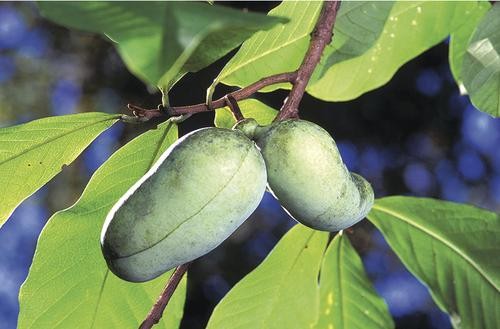Joan Kimmel knows a lot about plants, but every now and then something comes along to stump her. So when customers at her North Side nursery, The Urban Gardner, began asking for a strange-sounding fruit tree called pawpaw, Kimmel had to get a few.
Pawpaw is the largest edible fruit native to the United States. Often described as tasting like a cross between mango and banana, the tropical flavor and custard-like texture make the pawpaw an exotic at home.
Yet pawpaws were eaten by Native Americans for centuries; sustained Lewis and Clark on their expedition; and were reported to be favorite dessert of George Washington. But the trees have fallen from most American's radars generations ago, as bananas and other tropical fruits found their way to grocery stores.
Toni Shar grows herbs and lettuce in her Perry Hilltop garden, but is clueless when it comes to the pawpaw. "How come I never heard of this?" she asks at the nursery.
The comeback has been slow, but it seems to have finally come. The Ohio Pawpaw Festival, held in September, is in its 13th year and has ballooned into a three-day gathering for lovers of the fruit.
Pawpaw's large seeds require a period of cold, damp stratification for up to four months. Once planted, they can take several months to germinate. That's why, for those newly enamored of the pawpaw, the young trees at the Urban Gardener, which Kimmel owns with Lynne Weber, are such a prize. (Take one home for $50.)
"That's what the nurseries are for," Kimmel says.
The Urban Gardner, 1901 Brighton Road, North Side. 412-323-4769 or www.urbangardenerpgh.com. Festival: www.ohiopawpawfest.com


